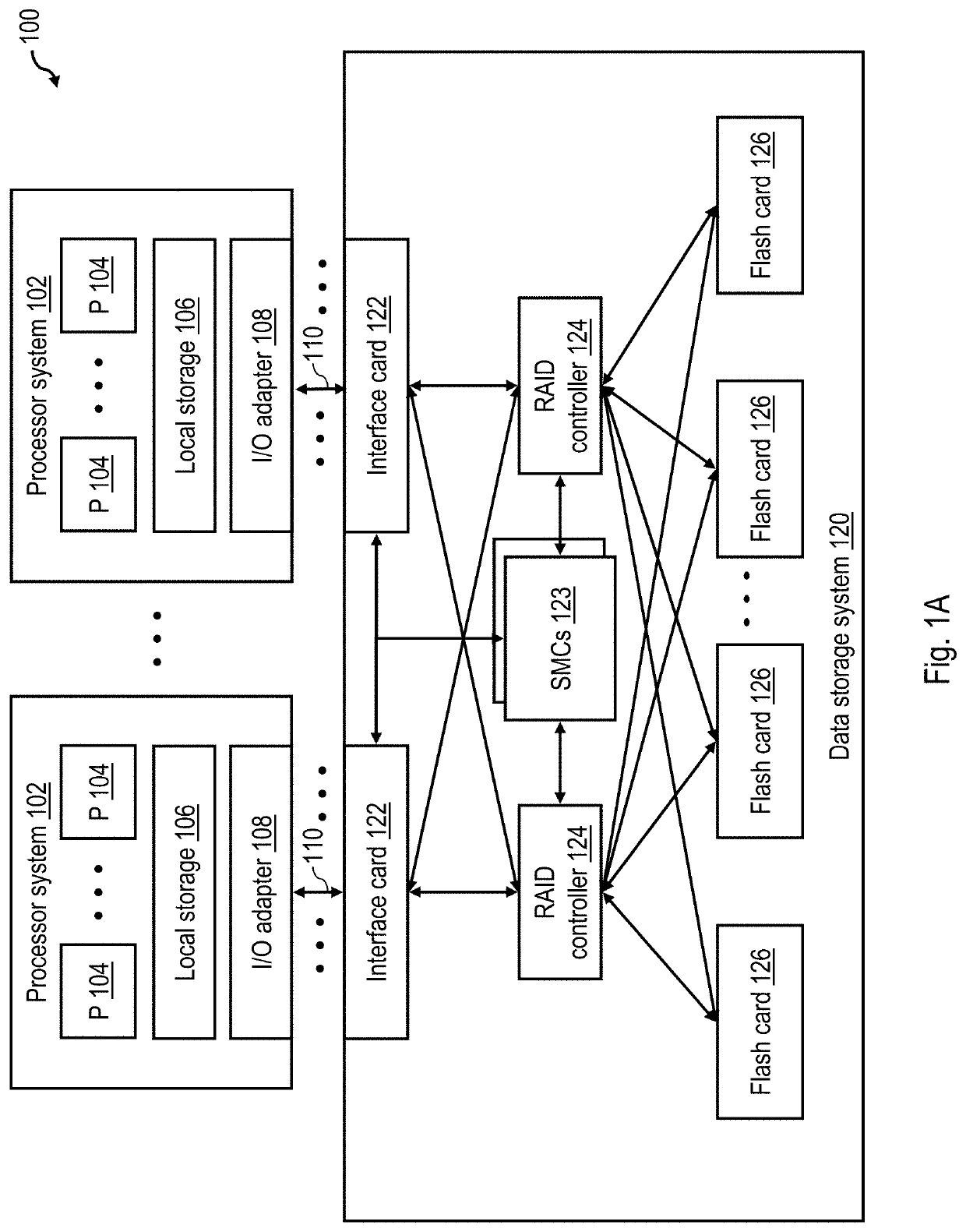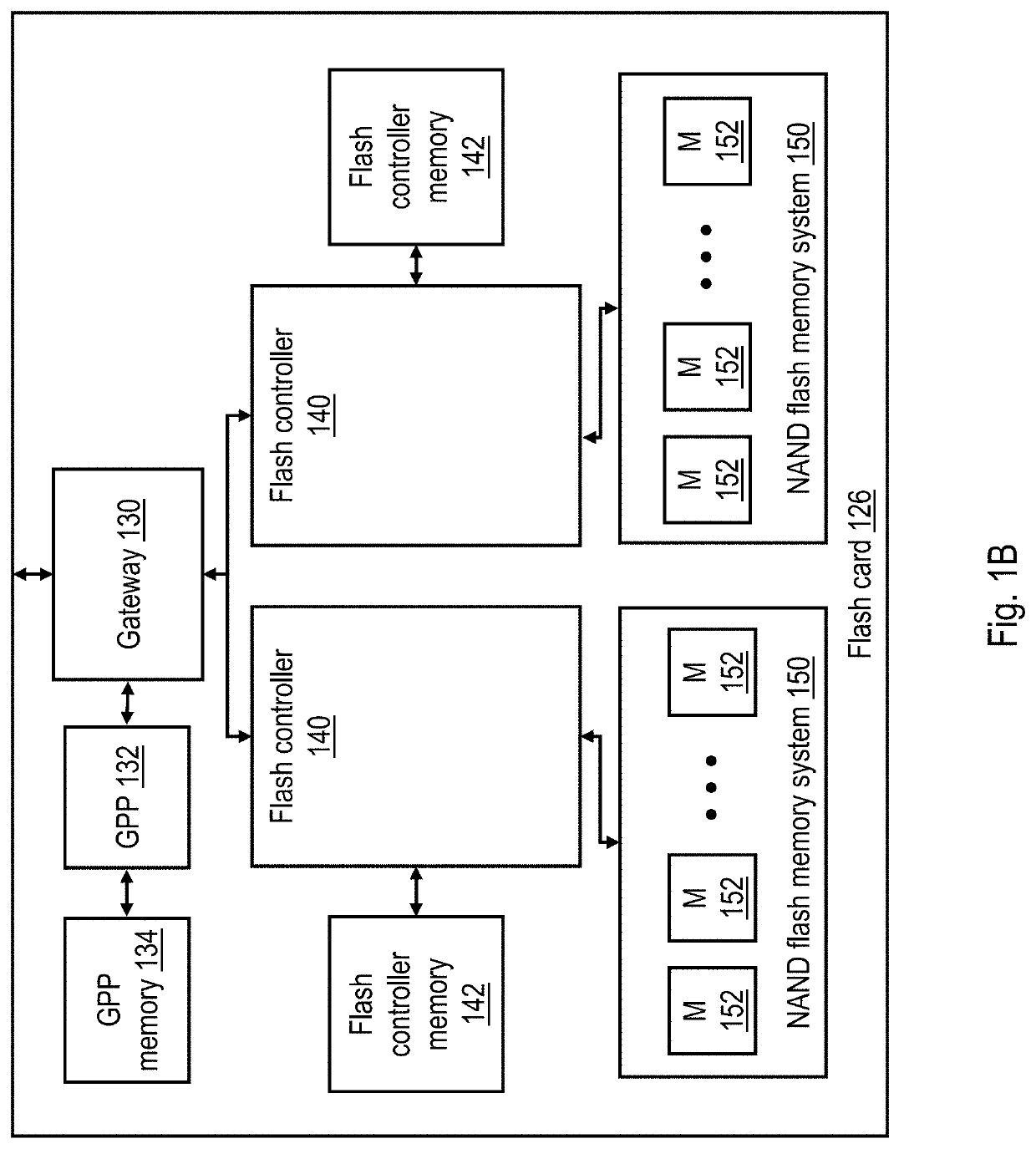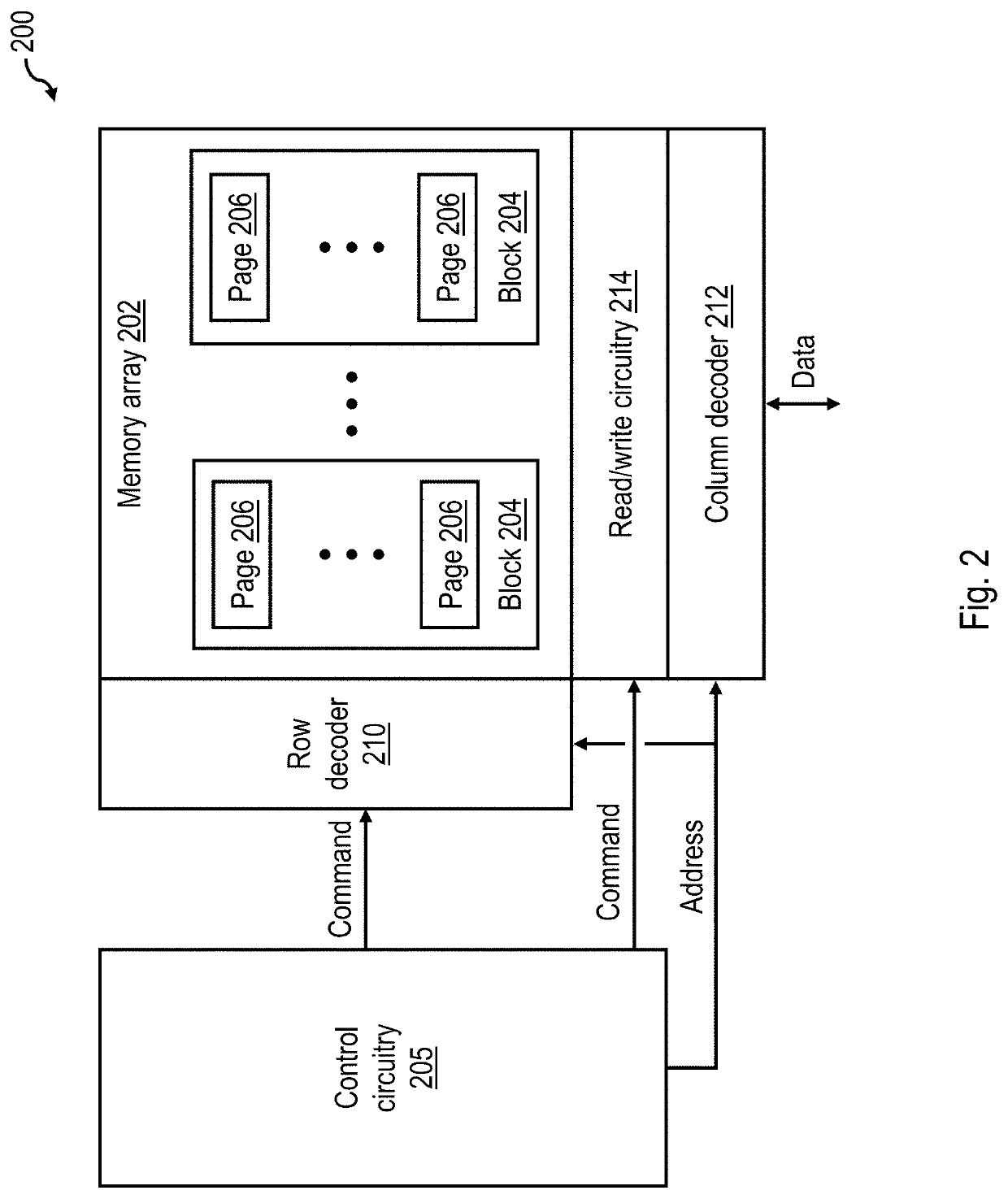Background mitigation reads in a non-volatile memory system
a non-volatile memory system and background mitigation technology, applied in the field of data processing and data storage, can solve the problem that the error correction code (ecc) implemented to protect the integrity of the data cannot correct the large number of bit errors, and achieve the effect of accurately reflecting the long-term effects of wear on the block
- Summary
- Abstract
- Description
- Claims
- Application Information
AI Technical Summary
Benefits of technology
Problems solved by technology
Method used
Image
Examples
first embodiment
[0043]With reference now to FIG. 5, there is illustrated a high level logical flowchart of an exemplary process for mitigating errors in a non-volatile memory in accordance with a The illustrated process (and those given in FIGS. 7-8) may be performed, for example, in hardware, software, firmware, and / or a combination thereof by flash controller 140 and / or GPP 132, each or both of which may be referred to herein generally as a “controller.”
[0044]The process of FIG. 5 begins at block 500 and then proceeds to block 502, which illustrates the controller initializing three process variables, b, g, and p, which respectively specify indices for a block among the Nb blocks containing valid data, a page group among the Ng page groups within each block, and a physical page among the Np physical pages within each page group. Note that Np may vary for different page groups without altering the spirit and scope of the invention. The values of the block and physical page indices need not match ...
third embodiment
[0054]Referring now to FIG. 8, there is depicted a high level logical flowchart of an exemplary process for mitigating errors in a non-volatile memory in accordance with a As indicated by like reference numbers, the process of FIG. 8 is the same as that shown in FIG. 5, except for the inclusion of new blocks 800-802 between blocks 504 and 506.
[0055]At block 800 of FIG. 8, the controller determines whether or not the error count observed for page p in the background read performed at block 504 exceeds an error count threshold. The error count threshold may be individually determined for each block and may be adapted by the controller according to the operating conditions of the block, e.g., P / E cycle count, read disturb, data retention, etc. In response to the controller determining at block 800 that the error count observed for page p does not exceed the error count threshold, the process passes from block 800 to block 506, which has been described. If, however, the controller dete...
PUM
 Login to View More
Login to View More Abstract
Description
Claims
Application Information
 Login to View More
Login to View More - R&D
- Intellectual Property
- Life Sciences
- Materials
- Tech Scout
- Unparalleled Data Quality
- Higher Quality Content
- 60% Fewer Hallucinations
Browse by: Latest US Patents, China's latest patents, Technical Efficacy Thesaurus, Application Domain, Technology Topic, Popular Technical Reports.
© 2025 PatSnap. All rights reserved.Legal|Privacy policy|Modern Slavery Act Transparency Statement|Sitemap|About US| Contact US: help@patsnap.com



